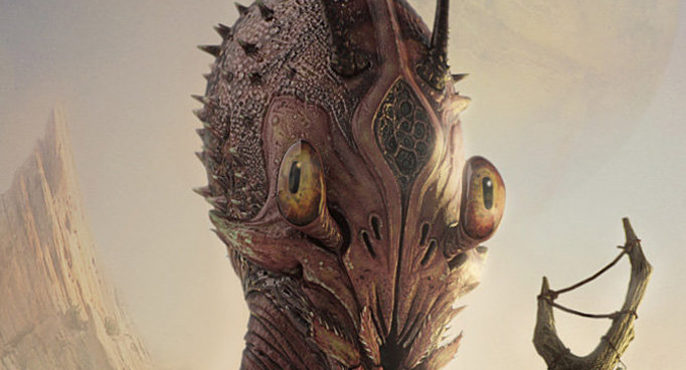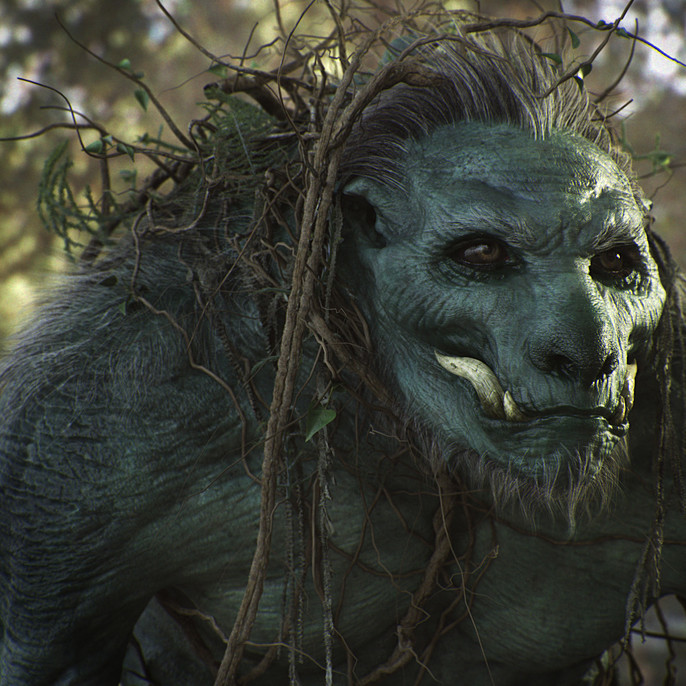
The Journey of a Lead Character Artist
Alessandro Baldasseroni has been in the art community for over two decades. His experience at some of the top studios and freelance work have proven him to be a leader in the industry. Here is his journey and insight into how you can become successful.

Can you tell us about some of your latest work?
My latest works include the two characters for Nvidia`s SOL realtime cinematics. For those I was responsible for both modeling and texturing:
What does your process look like?
I'm a production character artist working for films, games and commercials. Generally speaking, I start with a given concept and do my best to translate it into a 3D usable asset with clean topology for animation. At first, I tend to collect tons of references for general forms, details, material look dev and so on.

After that follows a blocking stage where I roughly assemble in polymodeling (but it really depends on the concept) the main parts of the character. After that, I check with riggers if there are any concerns in terms of alignment , design and so on...and I fix topology and align the joints according to their specifications.

I then start going deep into modeling to add proper topology. At this stage there is a lot of back and forth between my poymodeling software (either 3DSMax or Maya) and Zbrush. When I'm satisfied with the hi-res model I do UVs and for that I really rely on Maya's UV tools. They're fast, simple, and efficient for my needs. Most of my texturing these days, when it comes to realtime assets, are done in Substance Painter and I build the shaders in the engine requested (either Unreal, Arnold or Vray) depending on the studio I work for and the pipeline involved. For Nvidia it comes mostly to Unreal Engine and our proprietary realtime engine. Also Maya + Arnold for offline renders.
Do you collaborate with a team on projects or prefer to work alone? Why?
I've been working with teams for my entire career on projects and I'm totally comfortable with that.

Working alone happens when I freelance remotely or when I do personal projects. I enjoy that probably more because I feel the variables are less and I have more control on my time and a little more creative freedom.

Take us through your day. How does working remotely compare to being in studio?
Working from home for Nvidia is quite comfortable. We have team chats, dedicated channels, and whenever is needed we can jump into videoconference with team members. My daily routine is not too different from being in a studio from the point of view of communication. Of course, once in a while you miss having people around but it’s all a matter of finding your own balance.

I’m pretty disciplined when it comes to that. I don’t work in my underwear or leave food on my desk. That’s a no no. Also, I try to be disciplined with my working hours- start to work at the same time in the morning and disconnect after about 8/9 hours of solid work. Otherwise, before you know it it’s already night and you’re still there glued to your computer. It works very well for people like me who create assets and have very well defined deadlines.
How did your career begin?
I started my career in Italy working as a generalist for a video game developer in Milan around 2002. I was very active at that time on online communities and forums.

I got contacted by Blur Studio in 2006. They noticed my portfolio and asked me if I was interested in remote freelancing.

I freelanced remotely for about one year until they decided to hire me full-time, so I moved to LA in 2007. Stayed at Blur for more than 8 years as Lead Character Artist .
After Blur I moved to Riot Games and The Mill and ultimately Nvida, where I'm currently employed.
What led you to where you are now?
Passion, lots of it for what I do. In the beginning it was very strong.

What do you think is the most important aspect of an artist’s portfolio?
Basically finished works. And I say this because lots of people tend to put in their portfolios sketches, work in progress etc which don't give an idea of their true potential. Also, show a lack of commitment . After that, follows presentation in terms of polishing and overall cleanliness.

What do you think is the most important aspect of the interview process for a new team member?
Humbleness, in my opinion, politeness. Most of the time, if you get to the interview process it's because your portfolio has been evaluated already. So what teams look for are team players, people who don't give the impression to be a premadonna or overconfident .


If you had to start your career over again what would you do differently?
I would probably try to be a better manager of my time, especially my overtime. I feel I gave way too much overtime and passion to companies and people which didn't really deserved it. But maybe it's something that you inevitably have to go through in the beginning.

Any advice for ambitious artists out there?
Chill out a bit, it's just a job in the end .
Follow Alessandro's work here: